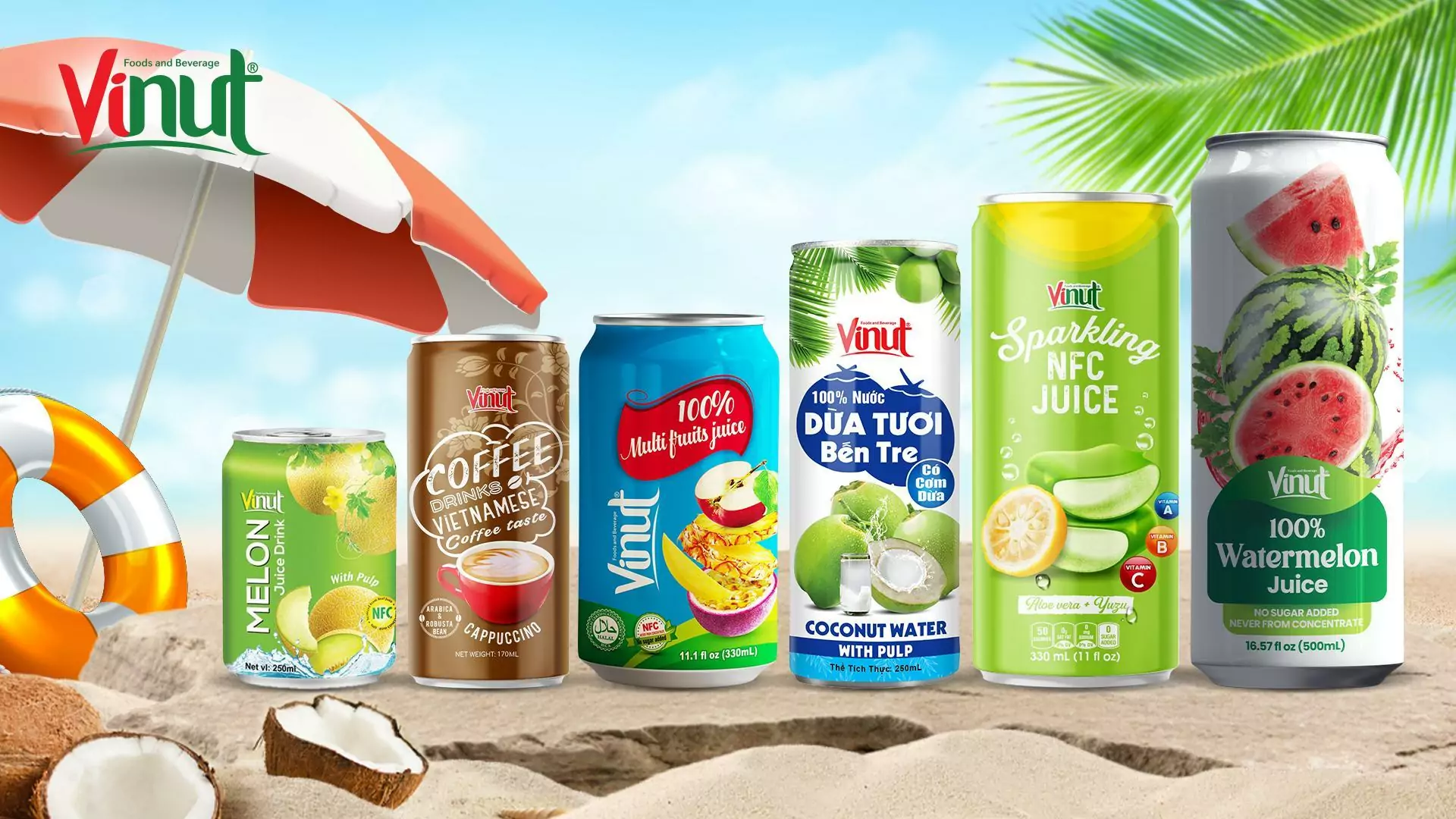Beverage packaging with cans – What do you know about insights?

There are many types of packaging in beverage industry, in which cans are the most popular. As we can see the volumes of cans are usually 330ml and wonder why are they produced at 330ml? Is that as much as we should drink or is there some other reason?Before the second world war, beer in the US was filled in steel cans which used what had been a traditional size for canning peas. This held 12 fluid ounces of drink and the volume and diameter of the can was retained when the modern style of so-called “two-piece” (with a lid and a body) drinks can was introduced in the late fifties. A volume of 12oz is 355ml, and this is still the standard in the US. Since Europe and our country uses liter and not oz as the unit of measurement and it was converted to the round figure of about one-third of a litre, or 330ml. Demand in Europe for bigger volumes in beer cans lead to the third larger size of 440ml and later the 500ml. Smaller sizes such as 150ml, 200 and 250ml are employed for children’s drinks and mixers where bigger volumes are not required. Regional traditions influence can sizes. In Venezuela, 8oz and 10oz beer and soft-drinks cans prevailed until recently because they fitted in the local cooled vending machines. Drinks cans are now made in dozens of sizes worldwide, depending on local needs, from 150ml up to 750ml, 1500ml or even 2000ml. The boxes of different volumes are made but we see that 330ml cans are still the most popular today as in the past. The global beverage cans market size was valued at USD 35.72 billion in 2020 and is expected to expand at a compound annual growth rate (CAGR) of 5.1% from 2020 to 2028. The demand for beverage cans is expected to be driven by the rising consumtion of non-alcoholic products among health-conscious consumers.Aluminum cans are the most recycled beverage containers worldwide. An average aluminum can contains 70% recycled metal. These are lightweight and stackable, which results in a reduction in the overall carbon emissions during their transportation. They also improve the storage and shipping efficiency of logistic companies. Steel can extend the shelf life of beverages, thereby reducing wastage. The aluminum material segment dominated the market with a revenue share of 96% in 2020.There are tons of can suppliers worldwide. In which three major suppliers dominating the global can market are Ball Corporation, Ardagh Group and Crown Holdings. The big three can suppliers have power to settle prices, timelines and minimum order quantities (MOQ) and give an impact to the global market.Adequate lead times are one of the most important aspects of your beverage business. If you don’t have an adequate lead times, your production can be affected and increased the costs. To minimize the impact of unexpected lead times on your production timeline you should stay on top of your schedule and keep an extra month of inventory on hand if possible.The minium order quantity (MOQ) is usually a condition from supplier. Depending on the size of the can, full truckload (FTL) can vary. In case you can’t meet the MOQ, the option is to order pallets of cans from a broker or reseller. If so, the cost can be higher.Most can styles are on general standards. If there is sudden desire for a popular new can model, supply may become limited. The case happened with one of the biggest supplier in the can market – Crown in 2015 when it ran into a capacity issue and had to turn away smaller breweries. So the best way to avoid availability issues is to plan ahead and pay attention to market trends and developments in beverage packaging while building in time and flexibility into your plans whenever possible.The brand is a beverage company is its important asset that they always maintain across packaging and markets. There are standard 4 colors (cyan, magenta, yellow and black) in designing and printing but printing on a can is much different. The 4 colors are applied as separate layers to a substrate and other colors are created by overlapping those colors or adding a spot color or PMS color. If your products need printed cans, all of the colors must be transferred to the can at one time from one common plate. This is a complex process so you need to work closely with vendors about special requirements before you place an order. There are many types of packaging in beverage industry, in which cans are the most popular. As we can see the volumes of cans are usually 330ml and wonder why are they produced at 330ml? Is that as much as we should drink or is there some other reason?Before the second world war, beer in the US was filled in steel cans which used what had been a traditional size for canning peas. This held 12 fluid ounces of drink and the volume and diameter of the can was retained when the modern style of so-called “two-piece” (with a lid and a body) drinks can was introduced in the late fifties. A volume of 12oz is 355ml, and this is still the standard in the US. Since Europe and our country uses liter and not oz as the unit of measurement and it was converted to the round figure of about one-third of a litre, or 330ml. Demand in Europe for bigger volumes in beer cans lead to the third larger size of 440ml and later the 500ml. Smaller sizes such as 150ml, 200 and 250ml are employed for children’s drinks and mixers where bigger volumes are not required. Regional traditions influence can sizes. In Venezuela, 8oz and 10oz beer and soft-drinks cans prevailed until recently because they fitted in the local cooled vending machines. Drinks cans are now made in dozens of sizes worldwide, depending on local needs, from 150ml up to 750ml, 1500ml or even 2000ml. The boxes of different volumes are made but we see that 330ml cans are still the most popular today as in the past. The global beverage cans market size was valued at USD 35.72 billion in 2020 and is expected to expand at a compound annual growth rate (CAGR) of 5.1% from 2020 to 2028. The demand for beverage cans is expected to be driven by the rising consumtion of non-alcoholic products among health-conscious consumers.Aluminum cans are the most recycled beverage containers worldwide. An average aluminum can contains 70% recycled metal. These are lightweight and stackable, which results in a reduction in the overall carbon emissions during their transportation. They also improve the storage and shipping efficiency of logistic companies. Steel can extend the shelf life of beverages, thereby reducing wastage. The aluminum material segment dominated the market with a revenue share of 96% in 2020.There are tons of can suppliers worldwide. In which three major suppliers dominating the global can market are Ball Corporation, Ardagh Group and Crown Holdings. The big three can suppliers have power to settle prices, timelines and minimum order quantities (MOQ) and give an impact to the global market.Adequate lead times are one of the most important aspects of your beverage business. If you don’t have an adequate lead times, your production can be affected and increased the costs. To minimize the impact of unexpected lead times on your production timeline you should stay on top of your schedule and keep an extra month of inventory on hand if possible.The minium order quantity (MOQ) is usually a condition from supplier. Depending on the size of the can, full truckload (FTL) can vary. In case you can’t meet the MOQ, the option is to order pallets of cans from a broker or reseller. If so, the cost can be higher.Most can styles are on general standards. If there is sudden desire for a popular new can model, supply may become limited. The case happened with one of the biggest supplier in the can market – Crown in 2015 when it ran into a capacity issue and had to turn away smaller breweries. So the best way to avoid availability issues is to plan ahead and pay attention to market trends and developments in beverage packaging while building in time and flexibility into your plans whenever possible.The brand is a beverage company is its important asset that they always maintain across packaging and markets. There are standard 4 colors (cyan, magenta, yellow and black) in designing and printing but printing on a can is much different. The 4 colors are applied as separate layers to a substrate and other colors are created by overlapping those colors or adding a spot color or PMS color. If your products need printed cans, all of the colors must be transferred to the can at one time from one common plate. This is a complex process so you need to work closely with vendors about special requirements before you place an order.
